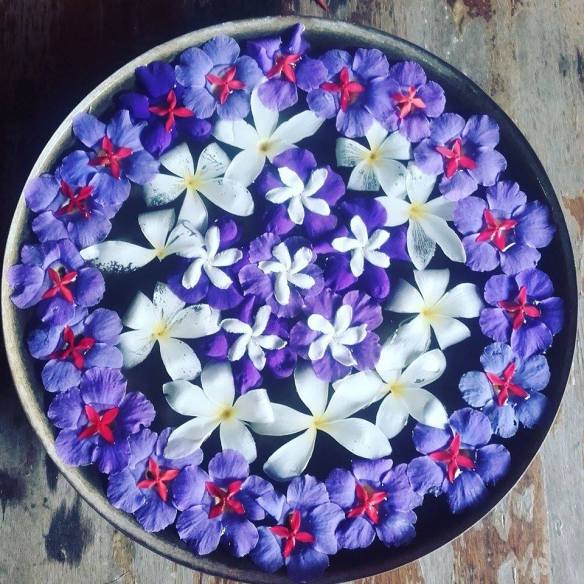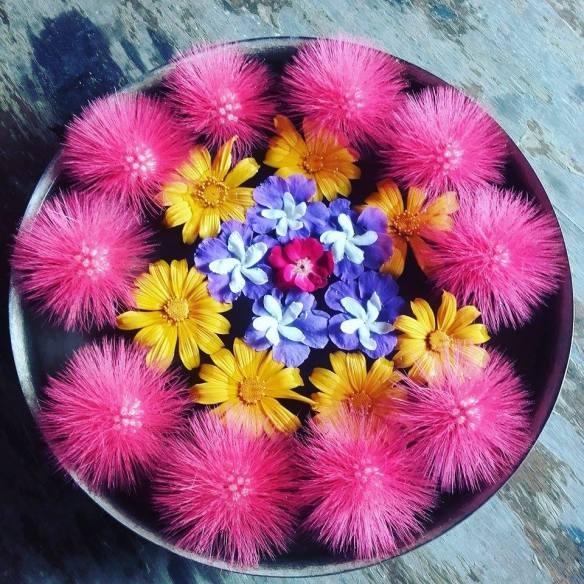By: Hibaq Dougsiyeh
Upon my arrival to India, one aspect that I immediately noticed was the appreciation for all forms of art. Art seems to come very natural to the people of India and a design as complicated as a kolam, for example, is simple and easy to the majority of them. A kolam is a geometrical design that is drawn on in front of homes and are thought to bring in prosperity. One morning, at the entrance of the guesthouse where we are staying, I observed one of the women who work there designing an intricate kolam freely, with no traces to assist, while laughing and talking with her co-workers. After seeing the finished result, the first thing I thought of was how amazing this design would be as a tattoo! I know plenty of tattoo artists who make similar designs, but not free-handedly or as fast as the women in India. Not to mention how this beautiful design is created using chalk dust. Not chalk, as I imagined it was when I first saw one, but the dust. What they do is they take a pinch of dust and create dots to help with the alignment of the design, and as they release the dust on the ground, they make the kolams. After taking brief lessons at the NGO Mohanam and witnessing how difficult it actually is to make a kolam, it made me appreciate it so much more.

Another simple yet beautiful artistic gesture I’ve come across many times are the flowers on floating water. The first time I saw this was, again, at the entrance of the guesthouse we resided in. The colorful flowers were laid out on a bed of water in a circular pattern and are changed every so often to different patterns based on what flowers are available that day. In other locations, you can see the bowl of flowers placed near statues of Ganesh, the God of Beginnings and Remover of Obstacles, as well as some lighted incense. Again, something to creative, artistic and a norm in this culture and you can’t help but appreciate its beauty and the vision behind the artist.



There is an abundance of plays, films, dance performances, and art exhibitions around Tamil Nadu and what’s great about them, besides the obvious creative and beautiful pieces, are the fact that the viewings are mostly free. Tamil Nadu’s appreciation for the arts is so full that it is shared with the public at no cost. You can’t help but see that the people of India are so rich in their creative talents. I was lucky enough to attend a dance performance at Sri Aurobindo Auditorium of a traditional Indian dance performed by a group of very talented girls. This free performance was absolutely breathtaking, with each precise dance move resembling a pose from a sculpture and every movement imitating the sound of an instrument. The performers were each wearing solid colored saris with jewelry from head to toe that made beautiful ringing sounds with every step. They each had henna designs on their hands and feet that were visible to the audience thanks to the precise dance moves that accompanied the dance called Odissi. Odissi is the classical dance style from the city of Odisha in Eastern India that was ritually performed from 10th century through the 16th. After India gained its independence in 1947, the dance decreased in performance because of its dislike from powerful Hindi rulers; however, in the late 50s, it was picked back up thanks to the locals of Odisha.

(photo credit: http://allindiaroundup.com)
It’s very admirable to see something traditional being practiced by the youth. It shows how the conservation for culture continues to be implemented in communities across India and although this developing country utilizes modernization as a template for development, they maintain traditional values to not lose their identity which I find to be very important.
